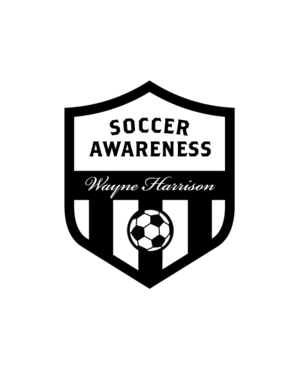Sideways on Soccer Using Corridors
/The following drill is an excerpt from Soccer Awareness eBook 6: Sideways On or Facing Forward Body Shape for Striker Position; The Brazilian Way.
This book includes In-Depth Information on Striker Movement.
Soccer is a sideways on sport -- players will have much more success when they are able to receive the ball at an angle. Being sideways on allows players, in advance of the ball, to be able to see peripherally advancing defenders.
These exercises are excellent for developing this sideways on aspect of receiving and passing the ball. This aspect of play becomes particularly important when one touch soccer is required. Being able to have the body halfway turned enables attacking players to use a couple of maneuvers to get past defenders. Get it Now
Now we have the two groups play together. Start Position is player (1) passes into Player (4). Defender (B) cannot close that player down until they have had their first touch. It is important to keep the start position passive from a defensive perspective.
Rules:
A player can’t pass forward in their own corridor or zone.
A player can pass forward to the other corridor.
A player can pass back in their own corridor.
4 v 4 game. Players have to pass diagonally forward because of the condition set. This develops the checking and passing habits of players. Players stay in their same corridors or zones. Theme is to have them check off at an angle and sideways on so they can see the opponent, their team mates and the goal behind them.
Strikers work together and link up trying to create angles of support between each other, one short, one long etc.
Develop: Increase the number of corridors and players.
Continuing the movement, (3) is side on to receive and can see opponent (A) and see across to teammate (4) and plays a one touch pass into (4)’s path.
(4) moves into the space where the ball is passed and loses the defender (B) and scores with a one touch finish and shot on goal.
Defender (A) closes down (3) and stops the shot at goal for (3). But the side - on stance of (3) allows (3) to see (4) and affects the pass to (4).
If defender (A) had not closed down the shot at goal for (A) then (3)’s best option was to shoot.
Players have to decide what is the best option a shot or a pass; it may be determined by the positioning of the immediate defender.
Back players can attack also.
More passing ideas
Focus is on scoring where they can. Check the defenders position to see if they can shoot, or need to pass instead. Read the space between the striker and the defender when you pass the ball into them.
Passing away from the striker into space in front of them and the defender or to the side of them and not into feet helps the striker move and receive and get away from the defender. The striker can make the movement first and motion to the passer where they want it by pointing also.
Here (3) checks off short and wide to receive a pass and passer (2) passes the ball away from the defender on the inside of the striker so the striker has their body between the ball and the defender but is also side on to o see in front of them.
Here (1) has a forward pass to (4) or a chance to shoot at goal. (4) Could take (B) away to open up the space for a shot also.













